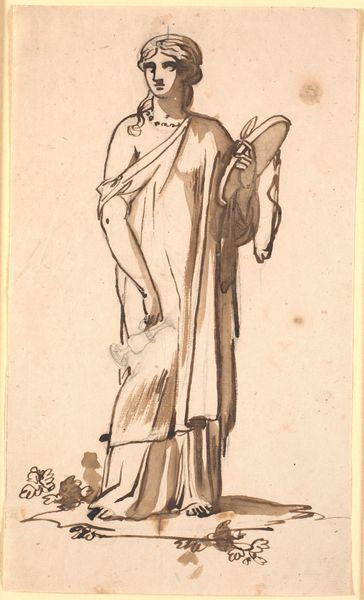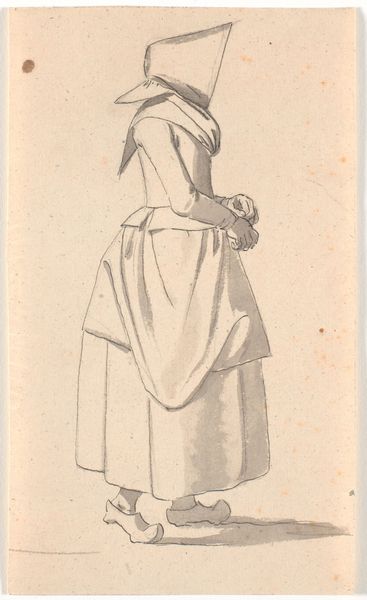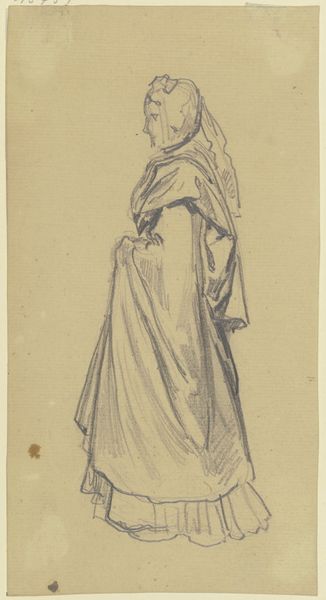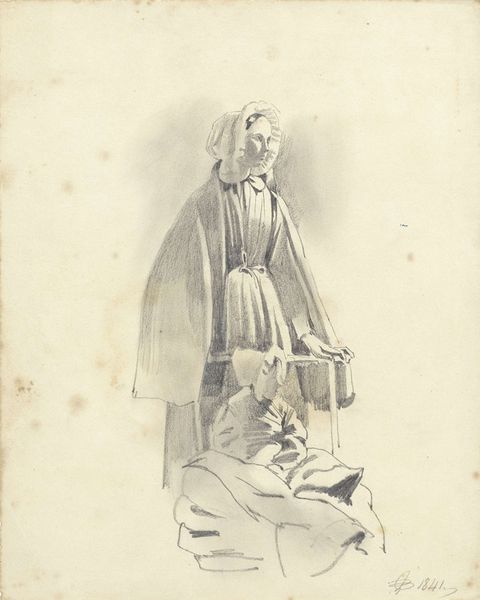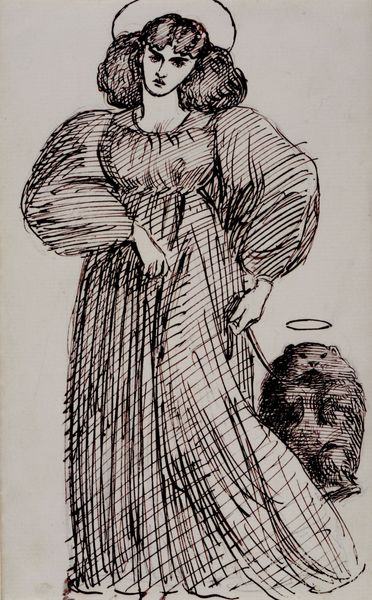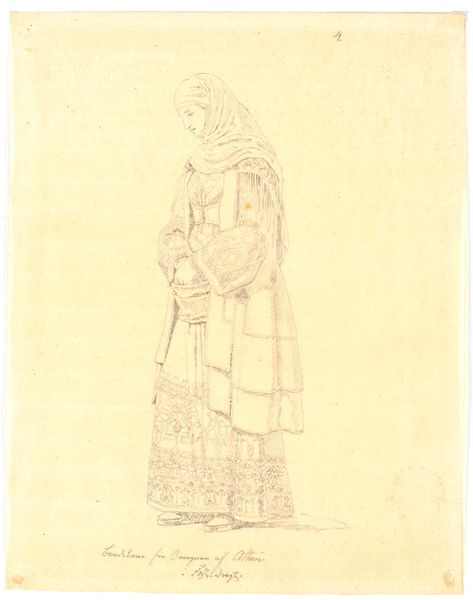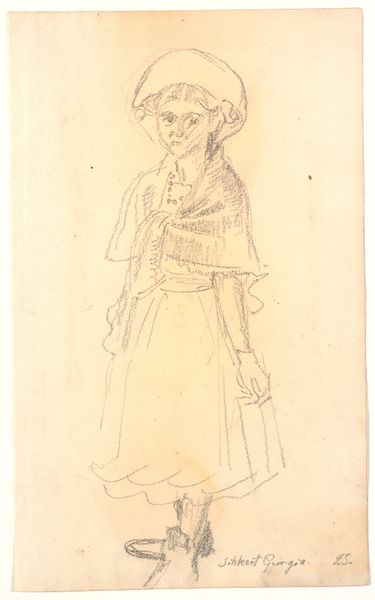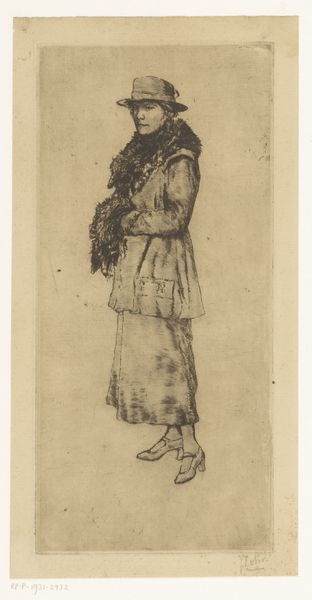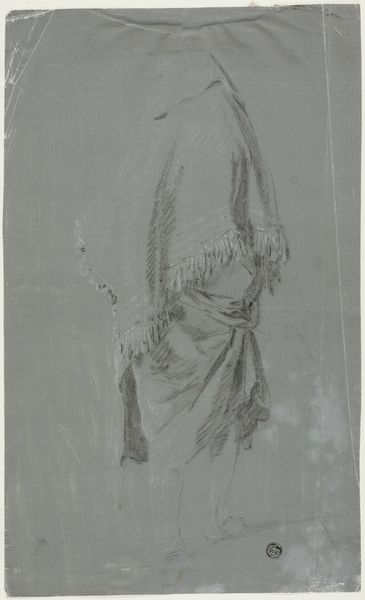
drawing, watercolor
#
portrait
#
drawing
#
pencil sketch
#
figuration
#
watercolor
#
romanticism
#
watercolor
Dimensions: 166 mm (height) x 108 mm (width) (bladmaal)
Editor: So this is "Den vægelsindede" by Wilhelm Marstrand, from the period of 1810 to 1873. It seems to be a watercolor and pencil sketch. There’s a playful quality to the quick, gestural lines. What strikes you when you look at this piece? Curator: I see a study of class and labor. Marstrand, by employing readily available materials like pencil and watercolor, democratizes the process of portraiture. The sketch, rather than a finished oil painting, speaks to a certain efficiency of production – perhaps reflecting the rise of a market demanding faster artistic output. Look at the paper itself: what kind of mill produced it? What were the material conditions of *that* labor? Editor: That's interesting. I was focused on the figure's expression, but you're drawing attention to the physical creation of the work itself. The mass production of paper enabling more sketches like this, it makes sense. Curator: Precisely! And what about the pigment itself? Where did the brown watercolor come from? Was it locally sourced or imported? These factors all shape our understanding. Furthermore, consider the social context: Was this woman a patron, commissioning the work? Or was this work done for Marstrand’s market or as an exercise? Editor: It seems almost like a snapshot, quickly captured. Would the fleeting nature of watercolor lend itself to rapid and repeatable processes of production? Curator: Good question! This speed connects directly to ideas around value and consumption. A quick watercolor becomes a commodity, part of the changing art market and an increased culture of portraiture during the 19th century. Does the sketch serve as a draft and reference or its own standalone market item? The details about paper manufacturing can certainly enhance a materialist perspective to this study! Editor: I never would have considered how the production of materials influences the final work. It's all connected. Curator: It's a shift from focusing solely on artistic intention to understanding art as a product of material conditions and social relationships.
Comments
No comments
Be the first to comment and join the conversation on the ultimate creative platform.



